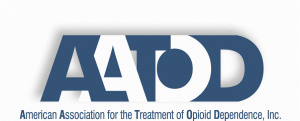ARIZONA
Arizona methadone treatment programs are evaluating HIV rates from programs in Phoenix and Tucson. It appears that the HIV rate in these programs is 2.5%. These treatment programs also report Hepatitis C rates to be above 75%, which appears to be consistent in studies of methadone treatment programs testing for HCV. In addition the providers also report that LAAM is being used in a larger number of clinics for a greater number of patients, demonstrating favorable results. (Editors note: It appears that more methadone treatment programs are finding successful results in using LAAM with increasing numbers of patients.)
CONNECTICUT
Thomas Kirk, Jr. (Deputy Commissioner of the Connecticut Department of Mental Health & Addiction Services) has convened an Opiate Substitution Therapy Advisory Committee. The primary charge of the Committee is to develop appropriate standards and protocols for a pilot study, which will evaluate the efficacy of providing methadone treatment in physician offices. Paul McLaughlin and Richard Bilangi, Association Board members representing Connecticut’s methadone providers, have been appointed by Dr. Kirk as members of this Advisory Committee.
The pilot study is the result of legislation, which was approved by the Connecticut legislature during 1997 and signed into law by Governor Rowland. This legislation also represented the first state legislation in the United States, specifically referencing the Guidelines of the American Methadone Treatment Association, Inc., which have also been printed in their entirety in this edition.
CSAT is providing partial funding in developing this project and 60 patients will be involved in the study, with 30 in a control group, remaining in the methadone treatment program and the other 30 patients being referred to physician settings. These patients will remain in the pilot project for 6 months. The significance of this pilot is enormous since other states are interested in learning from the results of this pilot as they develop plans to refer stabilized methadone maintained patients to physician settings.
MASSACHUSETTS
In a cooperative effort the Massachusetts Methadone Treatment Providers Association, Alcoholism and Drug Abuse Association (ADAA), Department of Public Health, Bureau of Substance Abuse Services (DPH/BSAS), and Massachusetts Behavioral Health Partnership (MBHP) – MCO for Massachusetts Health Medicaid) developed a new Medicaid rate structure for methadone counseling services. The negotiations resulted in a reimbursement structure that brought parity to methadone counseling services with the reimbursement structure for outpatient substance abuse and mental health treatment in the Commonwealth. In addition, rates for new services were developed and approved allowing for community support services and psychopharmacology services.
The Massachusetts Methadone Treatment Providers Association also lead a collaborative effort with the DPH, ADAA, and ADCARE in offering its first statewide methadone conference on May 13, 1998. The conference was well attended with representation from drug free substance abuse, mental health and community health care providers. The American Methadone Treatment Association, DEA, State officials and providers came together to discuss the role and efficacy of opioid pharmacotherapies in the treatment of opioid dependence.
RHODE ISLAND
Rhode Island’s methadone treatment providers have been working to educate Family Court judges and child protective workers who are involved in working with methadone maintained patients in the judicial process. This statewide initiative has advanced a better understanding of methadone treatment services and is expected to yield favorable long term results. Based upon presentations to the Family Court system, Mark Parrino was recently asked to present two workshops to social workers in the child protective system and it was well received. Our colleagues in Rhode Island recommend that methadone providers in the 41 other states pursue such educational initiatives in their respective state’s family court and child protective systems.


















